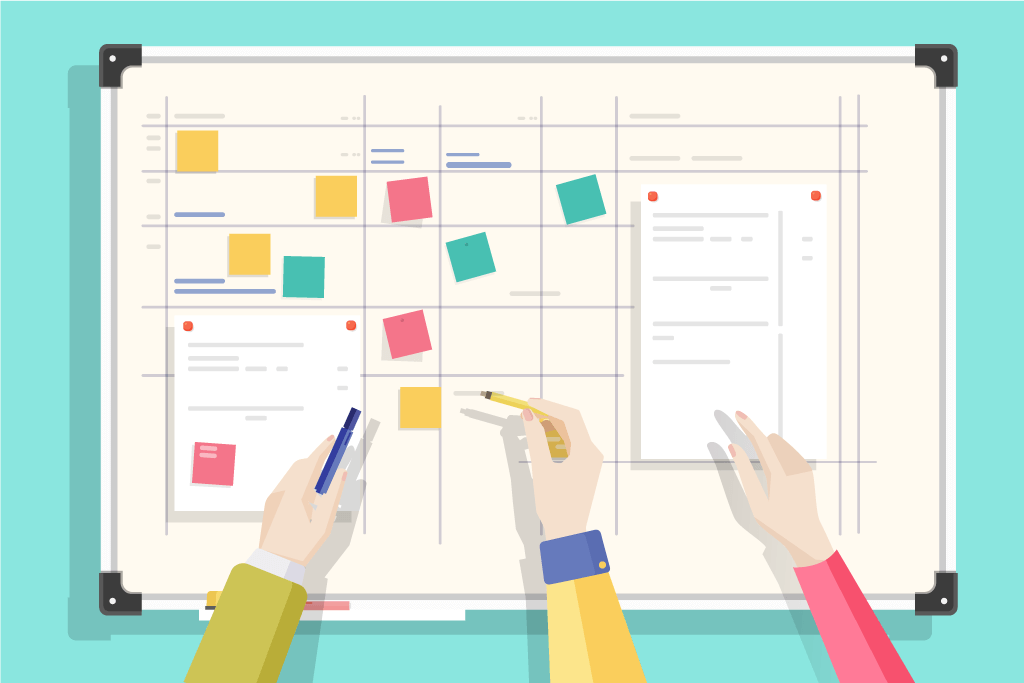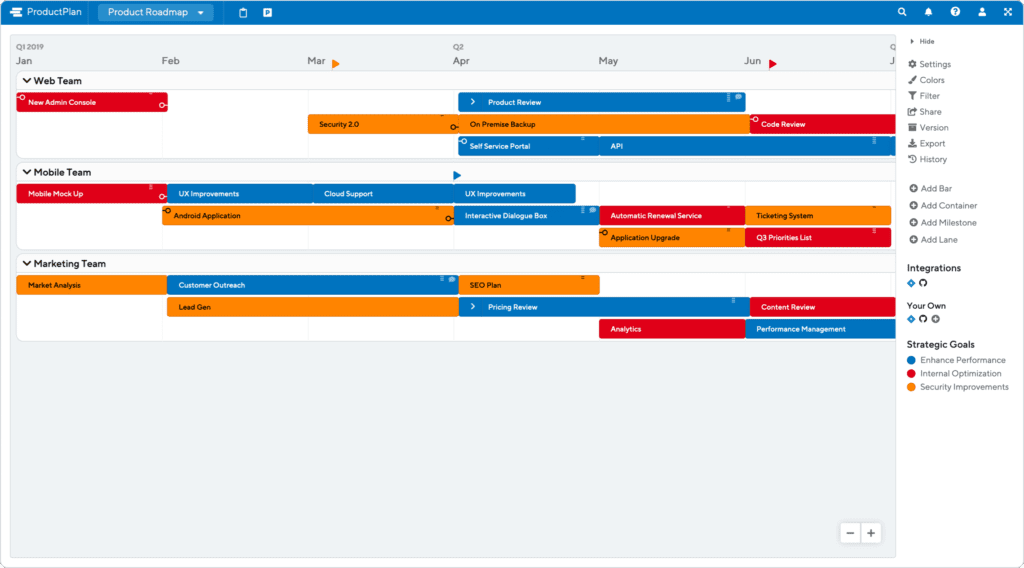What are Product Features?
Definition: Product features are a product’s traits or attributes that deliver value to end-users and differentiate a product in the market. The battery life of an electronic device can be considered a feature. So can the fabric or other materials a suitcase is made from. When it comes to software, product features can include any of the application’s functionalities, capabilities, and even its visual characteristics. But the key trait of any product feature should be the value or benefit it delivers to the user.
Should you ever include product features on your roadmap? There are several schools of thought on this, but our belief is that yes, product features can play an important role on your product roadmap — but only if those features meet certain conditions.
Before we discuss those conditions, let’s first discuss what we mean specifically by product features, and where they fit into the overall product hierarchy.
Where Are Product Features Situated in the Product Development Hierarchy?
In order for product management to effectively oversee the development of a product, projects need to be broken up into various categories or areas of focus. For each of those areas of focus, document the strategic thinking behind it as well as the tactical details needed to complete it. Product features have a very specific place in this hierarchy.
For most companies, particularly those using the agile method, the product development hierarchy might look like this, starting from the top strategic level and moving down into the tactical details:
STRATEGIC COMPONENTS (the product’s big picture)
- Theme (one of the large strategic objectives for the product)
- Epic (a subset of a theme; a strategic area of focus that helps serve that theme)
TACTICAL COMPONENTS (details of how to execute on the product’s big picture)
- Feature (a product attribute that strategically serves an epic or theme)
- Story (usually a subset of a product feature; it might take several stories to build a feature)
- Task (a discrete job required to complete some portion of a story or feature)
As we explain in great detail in our free book on product roadmaps, a roadmap should always be a strategic-level document — a high-level summary that communicates the strategic reasoning behind your planned direction for your product.
This will, after all, be the document you use to persuade your stakeholders to allow your team to go ahead with your strategic plan. You will also use the roadmap to communicate your strategy to the various teams that will be working with you on the product, and you will refer back to it periodically to ensure you are still on track.
With that in mind, it is important to keep your product roadmap clear of the tactical, task-level details. Generally speaking, a well-drafted product roadmap will display only the strategy(the why) behind your product plan — and in most cases that means only the themes and epics. In some cases, however, it may be appropriate to include specific product features that illustrate how you will achieve your strategic objectives.
![[Free report] 2021 State of Product Management ➜](https://no-cache.hubspot.com/cta/default/3434168/35d36a84-b157-43a1-acb7-b972dcb1d1ad.png)
When Do Product Features Belong on the Product Roadmap?
For a more concrete understanding of how this might play out in developing a real product, let’s consider a hypothetical PM who wants to include additional security and cybersecurity features in their software application.
Let’s look at how these features would fit into a larger product development hierarchy, and then determine whether they should or should not be included on the roadmap.
- Theme: Grow our customer base by entering viable new markets
- Epic: Become more attractive to larger enterprises
- Feature: Create the ability to add user-security roles in the application
- Stories:
- Allow the admin to create a new user
- Allow the admin to edit existing user profile or change the set of privileges
- Delete user
Would this hypothetical feature we have outlined in the example above — the ability to add user-security roles to the app — belong on the roadmap?
The answer is yes. This feature meets the most important criterion for inclusion on the product roadmap: it enlightens the reader as to the overall strategic direction for the product.

Many product features are not so explicit or self-explanatory in terms of their strategic purpose. For such features, it is best to place them not on the roadmap but rather on the backlog or in a project-management tool, such as Trello.
But when a product feature actually helps to illuminate the strategic thinking behind a theme or epic — as a new security feature would help underscore the plan to go after the security-sensitive enterprise market — then that feature can earn a place on your roadmap.





